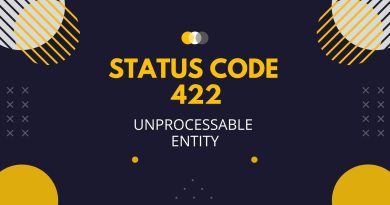What is robot.txt file?
Do you know what the robot.txt file is? Most people don’t, but it’s a pretty important file, nonetheless. The robot.txt file tells search engines which parts of your website they are allowed to crawl and index. Without it, your entire site might not show up in search engine results pages (SERPs). So, if you’re interested in SEO, you’ll definitely want to learn more about the robot.txt file!
What is the robot.txt file and how does it work?
Robots.txt is a text file that tells web robots (also known as search engine crawlers or spiders) which pages on your website to crawl and which pages to ignore. The robot txt file is located in the root directory of your website. If the robot txt file exists, the robot will then read the robot txt file to find out which pages it should crawl and which pages it should ignore. If the robot txt file does not exist, the robot will assume that it should crawl all of the pages on your website.
You can use the robot txt file to exclude certain pages from being crawled, such as pages that contain sensitive information or pages that are not relevant to the robot’s task. You can also use the robot txt file to specify the location of other files on your website, such as xml sitemap files. Including a sitemap in your robot txt file can help robots index your website more effectively.
Where does robots.txt go on a site?
The robot.txt file must be placed in the root directory of your website. The robot txt file must be named “robots.txt”. When a robot visits your website, it will first check for the robot txt file in the root directory. That’s the top-level directory that contains all of your other website files. For example, if your website is www.example.com, the robot.txt file would go at www.example.com/robots.txt.
Why the robots.txt file is important?
The robot.txt file is important because it gives you control over which parts of your website are indexed by search engines. If you have a web page that you don’t want people to find, you can use the robot.txt file to make sure it doesn’t show up in search engine results. It can also be useful for making sure that only the most relevant pages on your website are being indexed. This can help improve your website’s search engine ranking. You can also use the robot.txt file to specify the location of other files on your website, such as sitemap files. Including a sitemap in your robot.txt file can help robots index your website more effectively.
How to create a robot.txt file?
Creating a robot.txt file is pretty simple. You just need to create a text file and name it “robots.txt”. Then, you can use the following syntax to specify which pages you want to be crawled and which pages you want to be ignored.
- To crawl a specific page:
Allow: /page-to-crawl.html
- To ignore a specific page:
Disallow: /page-to-ignore.html
- Specify specific crawler not to crawl specific page
The first line tells the search engine bots which user-agents (i.e. bots) the instructions apply to. The asterisk (*) is a wildcard that applies to all bots. The second line tells the bots which pages they are allowed or not allowed to crawl. On Google search console you can see what pages have been indexed by google and what pages have been blocked.
You can also use the robot.txt file to specify how often the bots should crawl your website. This is done by adding a line that looks like this:
This line tells the bots to wait 10 seconds before crawling the next page. This can help to prevent your web server from being overloaded with too many requests.
Most important commands on robots exclusion protocol
There are a few other important commands that you can use in your robot.txt file. These commands can be used to help control how the bots crawl and index your website.
1) Sitemap: You can use the sitemap command to specify the location of your website’s sitemap file. This can help the bots to index your website more effectively.
2) Host: You can use the host command to specify the primary domain for your website. This is useful if you have a website that can be accessed from multiple domains.
3) Allow: You can use the allow command to specifically allow a web crawlers to crawl a page that would otherwise be disallowed.
4) Disallow: You can use the disallow command to specifically disallow a bot from crawling a page that would otherwise be allowed.
5) User-agent: You can use the user-agent command to specify which bots the instructions apply to. The asterisk (*) is a wildcard that applies to all bots.
6) Crawl-delay: You can use the crawl-delay command to specify how long the bots should wait before crawling the next page. This can help to prevent your website from being overloaded with too many requests.
These are just a few of the most important commands that you can use in your robot.txt file. There are many other commands that you can use to further control how the bots crawl and index your website.



